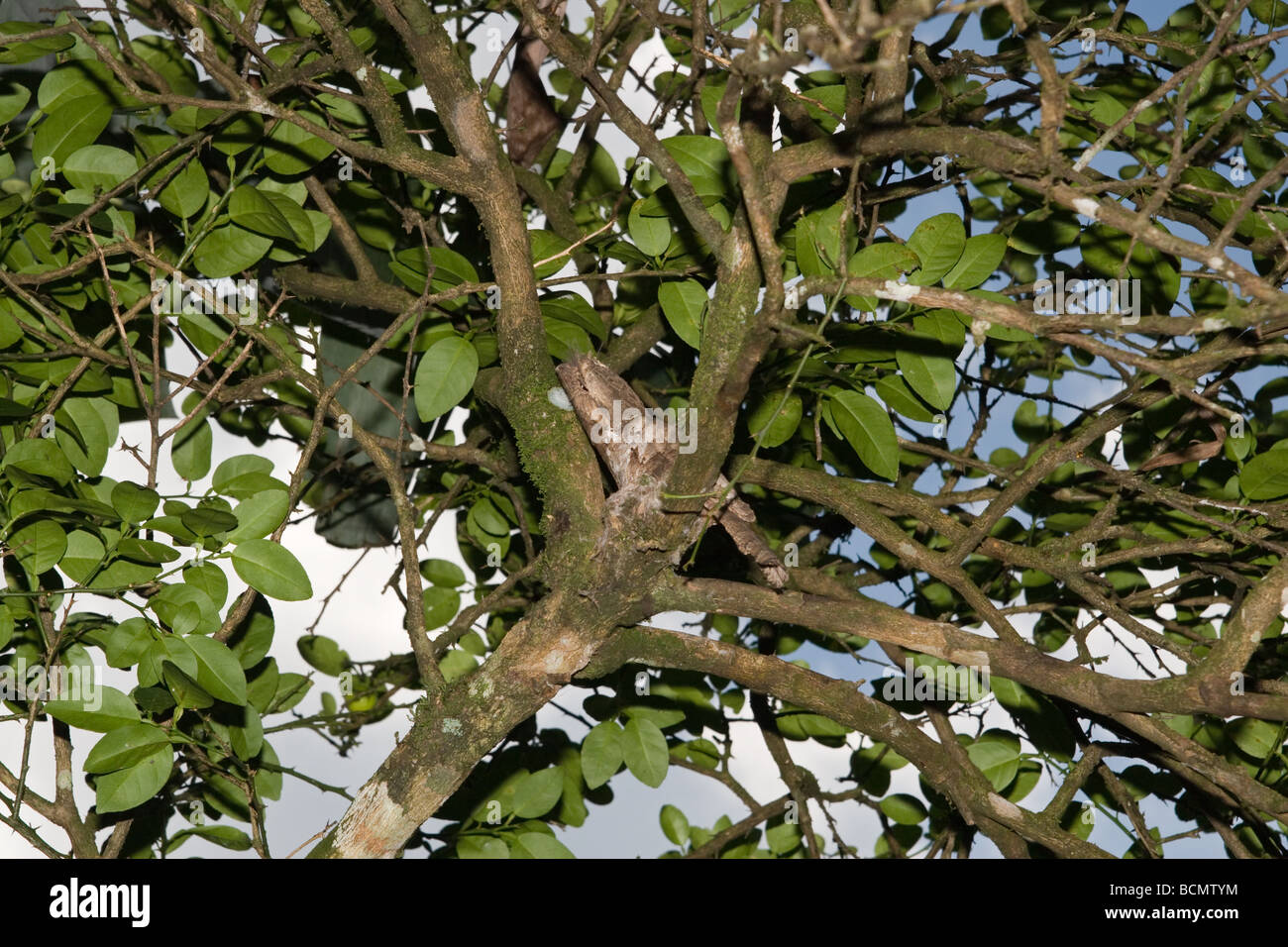The Sri Lanka Frogmouth Batrachostomus moniliger perched on a tree, is so well camouflaged that it looks like a broken branch.

Image details
Contributor:
Mohammed Abidally / Alamy Stock PhotoImage ID:
BCMTYMFile size:
50 MB (2.1 MB Compressed download)Releases:
Model - no | Property - noDo I need a release?Dimensions:
5120 x 3413 px | 43.3 x 28.9 cm | 17.1 x 11.4 inches | 300dpiDate taken:
18 January 2009Location:
Singharajah Rainforest, Sri LankaMore information:
Harrison's Guide to the Birds of Sri Lanka describes this birds as follows, "...spends day perched across a branch (not along, like a Nightjar) with bill up & facial plumes erect, looking rather like a broken branch"! This is a rare sharp shot of a Sri Lanka Frogmouth seated on its nest was taken at the World Heritage Sinharajah Rainforest from an eye level perspective with a Canon 500mm f4 IS lens. The Sri Lanka Frogmouth, Batrachostomus moniliger, is a relatively small frogmouth. The frogmouths are a group of tropical nocturnal birds related to the nightjars. This species is found only in the Western Ghats in southwest India and Sri Lanka. Its habitat is dense tropical forest. A single white egg is laid in the fork of a tree and incubated by the female at night and the male in the day. The Sri Lanka Frogmouth is about 23 cm long. It looks large-headed, and has a large flattened hooked bill and huge frog-like gape. The female is rufous, lightly spotted with white. The male is grey and more heavily spotted. Like other frogmouths, this species rests upright on branches during the day, camouflaged by its cryptic plumage and appearing like a broken branch. At night, it hunts insects with its large gape. The flight appears weak and fluttery, but they are capable of flying quietly under the forest canopy. The Sri Lanka Frogmouth is best located at night by its song, which is a loud descending cackly and frog-like series of Klock-klock-klock-klock-klock calls. It has a the quality of sound produced by rattling pebbles. This is the call of the male and it is often answered by the female whose call is low long harsh Krrshhhh.